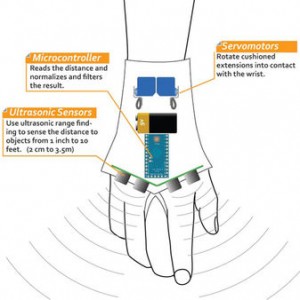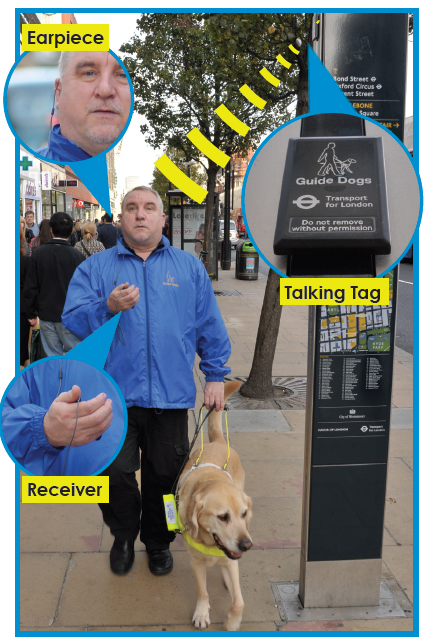 There has been a lot of buzz about the Tacit Project, A.K.A. “Sonar for the Blind,” recently. According to the inventor, Steve Hoefer, Tacit is the shorter and less descriptive name he has given his design for the “Hand Mounted Haptic Feedback Sonar Obstacle Avoidance Asstance Device”. In brief, what Tacit does is measure the distance to objects and then translate that measurement into pressure on the user’s wrist. The pressure increases as the distance decreases. Hoefer says that the device is very fast and accurate from just about one inch to ten feet.
There has been a lot of buzz about the Tacit Project, A.K.A. “Sonar for the Blind,” recently. According to the inventor, Steve Hoefer, Tacit is the shorter and less descriptive name he has given his design for the “Hand Mounted Haptic Feedback Sonar Obstacle Avoidance Asstance Device”. In brief, what Tacit does is measure the distance to objects and then translate that measurement into pressure on the user’s wrist. The pressure increases as the distance decreases. Hoefer says that the device is very fast and accurate from just about one inch to ten feet.
Hoefer designed Tacit to help visually impaired persons navigate complex environments. Some of the original designs were headband-based, but were scrapped for three very good reasons:
- The most dangerous obstacles are not at head level. Furniture and most of the other things that can be tripped over and stubbed on are waist level or lower.
- Vibrating motors stuck on your skull will drive you insane quickly.
- You would also look like a crazy person.
While we are not ready to jump on the “throw away your cane and leave your guide dog at home” bandwagon, we were hooked by the do-it-yourself aspect of this project. Tacit consists of two small Parallax Ping Ultrasonic sensors connected through a controller to two padded servo motors. The electronics are mounted on a custom neoprene wrist strap and powered by a 9-volt battery. The parts list, schematics, and source code are freely available and the whole project can be built for about $65 under the Creative Commons license. This may just be enough to get us to dust off our old soldering iron and talking multi-meter (yes, we really have one. Don’t you?) and get started. We probably need to clear away the Lego Mindstorm NXT robot debris from the workbench first.
What kinds of home brew projects have you been building in your basement?
 One of our special interests is the use of technologies such as RFID (Radio Frequency Identification) and NFC (near field communication) in the area of disability. The wide availability of accessible smart phones and the relative low cost of developing applications for them opens the door to many possibilities. A story written by Alena Roberts and recently published in the
One of our special interests is the use of technologies such as RFID (Radio Frequency Identification) and NFC (near field communication) in the area of disability. The wide availability of accessible smart phones and the relative low cost of developing applications for them opens the door to many possibilities. A story written by Alena Roberts and recently published in the
Follow us on Twitter, Like us on Facebook